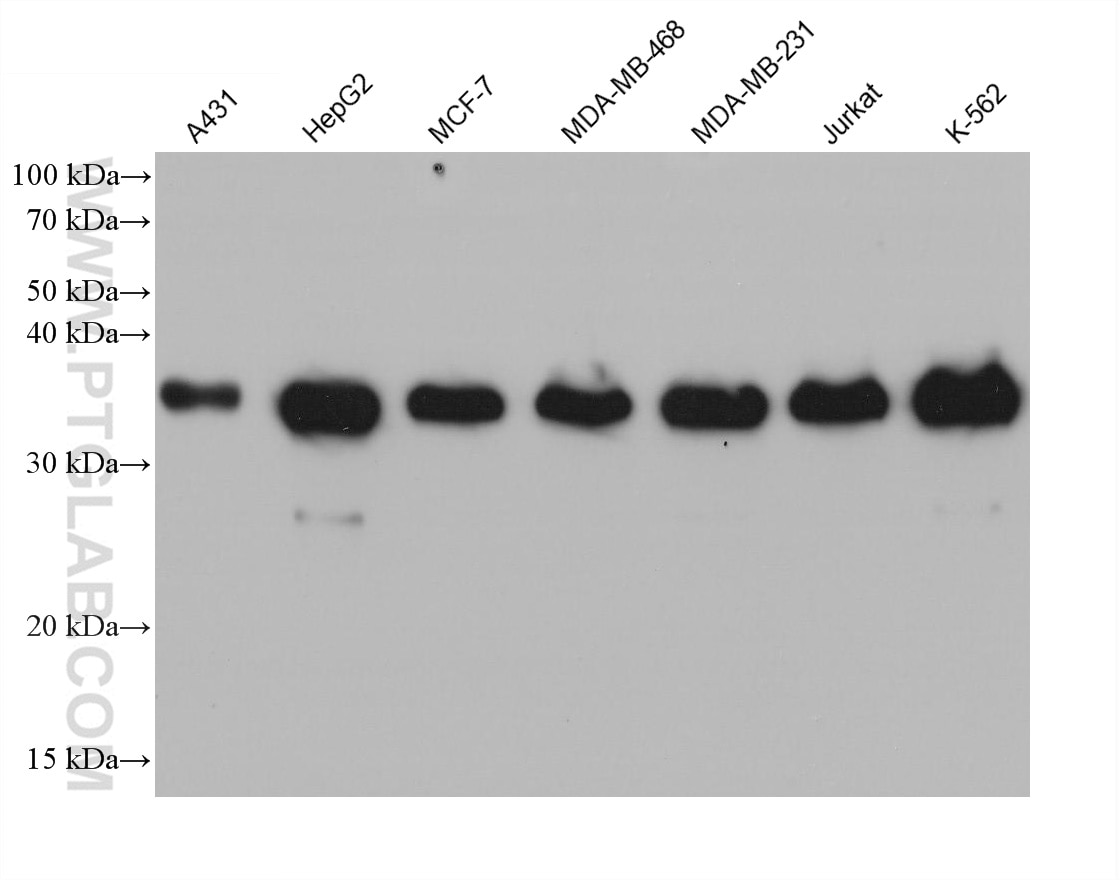Tested Applications
| Positive WB detected in | A431 cells, HepG2 cells, MCF-7 cells, MDA-MB-468 cells, MDA-MB-231 cells, Jurkat cells, K-562 cells |
Recommended dilution
| Application | Dilution |
|---|---|
| Western Blot (WB) | WB : 1:5000-1:50000 |
| It is recommended that this reagent should be titrated in each testing system to obtain optimal results. | |
| Sample-dependent, Check data in validation data gallery. | |
Product Information
68336-1-Ig targets MAD2L1BP in WB, ELISA applications and shows reactivity with Human samples.
| Tested Reactivity | Human |
| Host / Isotype | Mouse / IgG2a |
| Class | Monoclonal |
| Type | Antibody |
| Immunogen | MAD2L1BP fusion protein Ag7653 Predict reactive species |
| Full Name | MAD2L1 binding protein |
| Calculated Molecular Weight | 34 kDa |
| Observed Molecular Weight | 34 kDa |
| GenBank Accession Number | BC002904 |
| Gene Symbol | MAD2L1BP |
| Gene ID (NCBI) | 9587 |
| RRID | AB_3085060 |
| Conjugate | Unconjugated |
| Form | Liquid |
| Purification Method | Protein A purification |
| UNIPROT ID | Q15013 |
| Storage Buffer | PBS with 0.02% sodium azide and 50% glycerol , pH 7.3 |
| Storage Conditions | Store at -20°C. Stable for one year after shipment. Aliquoting is unnecessary for -20oC storage. 20ul sizes contain 0.1% BSA. |
Background Information
MAD2L1BP, also named as CMT2 and KIAA0110, belongs to the MAD2L1BP family. It may function to silence the spindle checkpoint and allow mitosis to proceed through anaphase by binding MAD2L1 after it has become dissociated from the MAD2L1-CDC20 complex. MAD2L1BP interacts with the spindle checkpoint and coordinates cell cycle events in late mitosis. MAD2L1BP may play an active role to remove MAD2 from p55CDC and tether MAD2 for silencing the checkpoint.
Protocols
| Product Specific Protocols | |
|---|---|
| WB protocol for MAD2L1BP antibody 68336-1-Ig | Download protocol |
| Standard Protocols | |
|---|---|
| Click here to view our Standard Protocols |



